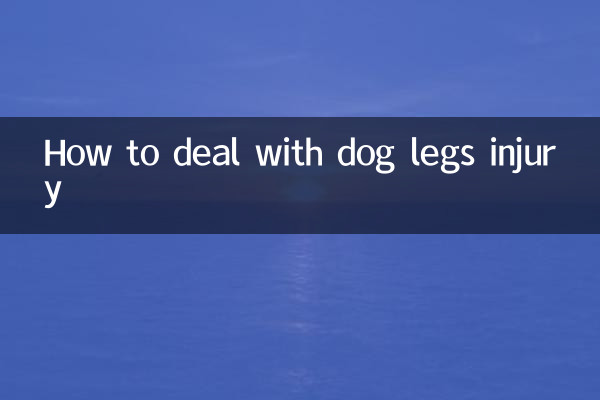How to deal with dog legs injury
Recently, the topic of pet health has remained popular on social media, especially the treatment of leg injuries to dogs has become the focus of many pet owners. This article will combine popular topics and hot contents across the network for the past 10 days to explain in detail the steps for treating dog leg injuries and provide structured data for reference.
1. Common causes of dog legs injured

There are many causes of leg injuries to dogs. Here are the following situations that netizens have discussed the most recently:
| reason | Percentage | Typical cases |
|---|---|---|
| Excessive exercise | 35% | Strains caused by sudden and violent running while walking the dog |
| Accidental fall | 25% | Falling off the sofa or stairs |
| Injured in a fight | 20% | Being bitten while fighting with other dogs |
| Foreign object stabbing | 15% | Step on glass or sharp objects |
| Other reasons | 5% | Vehicle impact, etc. |
2. Emergency treatment steps for dog leg injury
According to the advice of the pet doctor and the actual experience of netizens, the following are the emergency treatment steps after a dog's leg injury:
1.keep Calm: First soothe the dog's emotions and avoid it from struggling with pain.
2.Check the wound: Gently pull away the hair and observe the size, depth and bleeding of the wound.
3.Hemostatic treatment: Press the wound with a clean gauze or towel to stop bleeding. If the bleeding is severe, please seek medical attention immediately.
4.Clean the wound: Rinse the wound with normal saline or clean water, and avoid using irritating fluids such as alcohol.
5.Bandage fixation: Gently bandage with a bandage, and use a splint to fix the injured area if necessary.
6.Send medical treatment: Contact your veterinarian in time, especially if there is a fracture or severe laceration.
3. Comparison of recent popular treatment methods
The following are the treatment methods and their effects that netizens have discussed most in the past 10 days:
| Treatment method | Applicable | advantage | shortcoming |
|---|---|---|---|
| Natural healing | Slight abrasion | No medication required to reduce side effects | Recover slowly |
| Topical medicine | Superficial wounds | Simple operation, low price | May trigger licking |
| Surgical treatment | Fracture or severe tear | Remarkable effect, quick recovery | Higher cost |
| Physical Therapy | Muscle strain | Non-invasive, high safety | Professional equipment required |
4. Suggestions to prevent dog legs from being injured
According to recent hot discussions, the following measures can effectively prevent leg injuries to dogs:
1.Control the amount of exercise: Avoid having dogs perform sudden high-intensity exercise, especially small and elderly dogs.
2.Home safety: Install guardrails on the stairs and the edges of the sofa to prevent falling.
3.Trim your nails regularly: Too long nails can easily lead to unstable walking and increase the risk of injury.
4.Out-of-the-counter protection: When walking your dog on complex terrain, try to use a chest strap instead of a collar to reduce pulling damage.
5.Nutritional supplements: Appropriate supplementation of calcium and joint health products to enhance bone and muscle health.
5. Netizens' hot topics
Here are the popular questions and professional answers about dog legs injured on recent social media:
Q: What should I do if my dog’s legs are lame but the wound cannot be seen?
A: It may be a muscle strain or joint problem. It is recommended to restrict movement and observe for 24 hours. If there is no improvement, please seek medical attention.
Q: Can you apply wounds to dogs with human ointments?
A: It is not recommended that some ingredients are toxic to dogs, so be sure to use special medicines for pets.
Q: What should I do if the dog is unwilling to move after the operation?
A: This is normal, and you can gradually resume activities through gentle massage and encouragement of eating.
6. Summary
Leg injuries to dogs are common but need to be paid attention to. From recent hot content, it can be seen that pet owners have significantly increased their attention to scientific treatment methods. Only by mastering the correct first aid steps, understanding the treatment plan and taking preventive measures can the health of your dog be better protected. If the injury is serious or is uncertain about how to deal with it, be sure to consult a professional veterinarian in time.

check the details

check the details